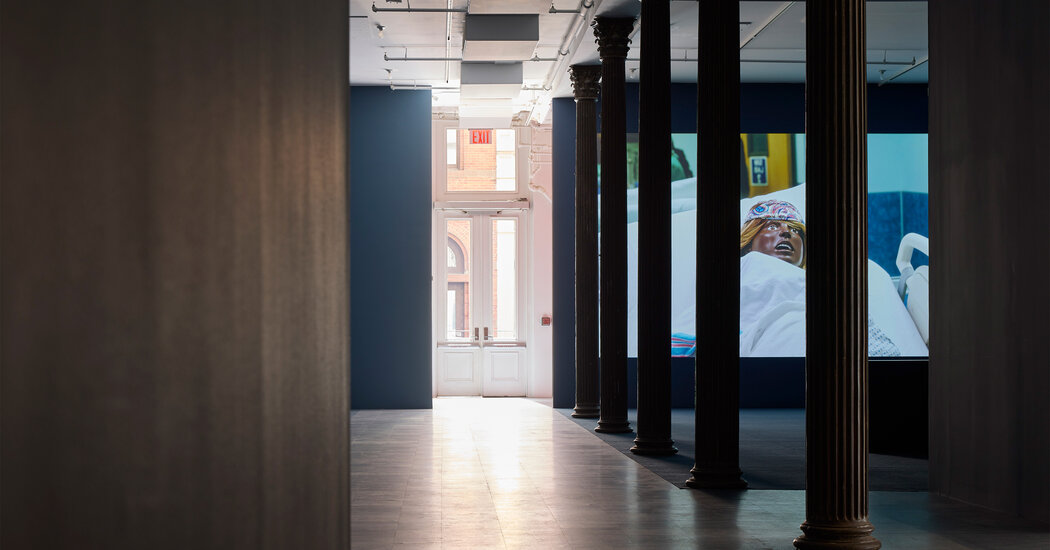Artists Space: A Pillar of New York’s Art Scene
A Legacy of Innovation
Established in 1972, Artists Space has served as a vital platform for artists, writers, and curators seeking to break away from traditional exhibition formats. Located in TriBeCa, this nonprofit organization has redefined the gallery experience, offering a space where avant-garde practices flourish.
Current Exhibition: Carolyn Lazard
Currently on view at Artists Space are two films by Carolyn Lazard, an artist notable for their candid exploration of the patient experience through a disabled lens. One film, titled “Vital” (2025), features performers Martine Syms and Cyrus Dunham as they navigate the nuanced environment of a medical visit, prompting viewers to question the essence of care itself.
Historical Context and Evolution
Since its inception, Artists Space has undergone several transformations, all while retaining its commitment to providing a space for emerging talent. The organization now occupies a renovated former carpet factory, incorporating a design that preserves its historic façade alongside modern functionality. Over the years, the surrounding neighborhood has blossomed into a significant arts district, which has attracted established dealers while maintaining a focus on independent creatives.
Foundational Beginnings
The conceptual groundwork for Artists Space was laid by critic Irving Sandler and arts administrator Trudie Grace, aimed specifically at artists lacking gallery representation. Early exhibitions featured a unique format where established artists would recommend emerging talent, creating a dynamic interplay within the art community.
Major Milestones and Movements
Artists Space quickly became a breeding ground for revolutionary art movements, notably the Pictures Generation and the No Wave music scene in the late 1970s. The 1977 exhibition “Pictures,” curated by Douglas Crimp, highlighted artists critiquing mass media imagery, while a subsequent festival showcased the raw energy of the No Wave music genre, intertwining visual art and music in groundbreaking ways.
Controversies and Challenges
Despite its progressive ethos, Artists Space has not been without controversy. Noteworthy incidents include the backlash against an exhibition featuring racially charged content in 1979 and the backlash surrounding David Wojnarowicz’s provocative essay during the AIDS epidemic in 1989. These events underscore the challenges faced by alternative space organizations in securing public funding while navigating artistic freedom.
The Present and Future
Today, Artists Space remains steadfast in its mission to champion promising and unconventional works, even as the landscape of funding for arts organizations evolves. Approximately 10% of its budget is derived from public sources, with the majority coming from private contributions. This hybrid funding approach allows the organization to maintain its integrity and continue supporting groundbreaking projects amidst shifting political climates.
Conclusion
As one of the last standing nonprofit platforms dedicated to contemporary art in New York, Artists Space continues to uphold its foundational goal: providing a nurturing environment where artists can realize ambitious projects. Its influence spans decades, marking it as a cornerstone in the rich tapestry of New York’s cultural landscape.


